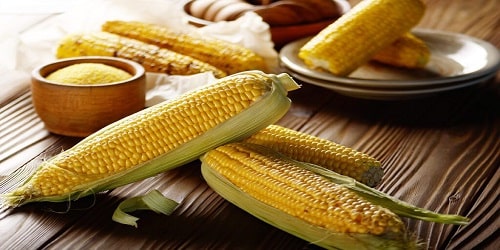Corn is a cereal originating from grasses that marked a before and after in pre-Columbian civilizations and has come to surpass wheat as the most consumed cereal in the world. It has a great genetic variability and its cultivation extends from America to Asia. On a nutritional level, it is a healthy source of carbohydrates and has special value for taking care of eye health. Today, more traditional culinary uses are preserved such as Venezuelan tripe or Mexican tortillas, and snacks in the form of popcorn or toasted corn while it continues to reinvent itself in gluten-free baking and confectionery. Among all its types, purple corn stands out for its color, and hard corn for being essential for making cornstarch. Below is a tour of types of corn, their properties, and culinary uses.
What is corn?
Corn ( Zea mays ) is a highly prized ingredient belonging to the grass family. It has positioned itself between the third and first most-consumed cereal in the world and today it is cultivated on both sides of the globe. Its plant has stems that can reach up to 4 meters in height and at the end of these appear the inflorescences, also known as spikes or cobs, protected from the sun and insects thanks to thick green leaves. Inside, there are the grains.
It is a versatile food that has been adapted to suit the culinary tradition. The flour is used to make recipes with their own identity such as Colombian arepas or Mexican corn tortillas in Latin America, while its semolina in Italy is made into polenta. Its gluten-free and creamy quality has also allowed the use of its flour to be extended to the fields of pastry and bakery for celiacs. In a less romantic order, its starches and derivatives are also used in the food industry to produce thickeners, sweeteners, oils, etc.
Currently, cultivation is concentrated in four countries: the United States, China, Argentina, and Brazil, and according to the OECD, the Organization for Economic Cooperation and Development, its main consumers throughout this decade will continue to be Mexico, the European Union, and Japan.
Origin and history of corn
One of the most widely supported hypotheses states that the American continent was the first land to see the birth of corn. Specifically, between the Mexican regions of Tehuacán and the valley of Oaxaca, where evidence of its consumption dating back more than 6,000 years has been found. And while some sources suggest that corn originated in the Himalayas and the Andes, there is no doubt that these golden grains have marked the history of Mexico and Latin America since pre-Columbian times.
In Mexico, the appearance of corn crops initiated the transformation from nomadism to sedentarism and created around it a whole social fabric and a worldview shared by peoples of diverse natures and languages. Its condition was sacred, to such an extent that the Nahua people kept corn seeds when a child was born and gave them to him when he grew up so that he could grow it himself and use it as offerings to the gods.
Its arrival in Europe, as might be expected, was mediated by Columbus and the discovery of corn in Cuba. Once it reached the peninsula, it spread throughout the Mediterranean until, in the hands of merchants, it conquered the African continent. It would take a little more than a century and a half to reach Asia via Thailand, Indonesia, and Japan. Today, it is part of so many cuisines that it would be difficult to describe the world’s tables without taking corn into account.
Types of corn
Classifying how many types of grains there are of a cereal that has been cultivated worldwide for millennia is, to say the least, a challenge. And while it does not seem advisable to investigate among the more than 300 current genetic varieties, we can get closer by dividing them according to their color, their nutritional uses, and unique nutritional properties. Below, from purple corn to transgenic corn, properties and differences.
Purple corn
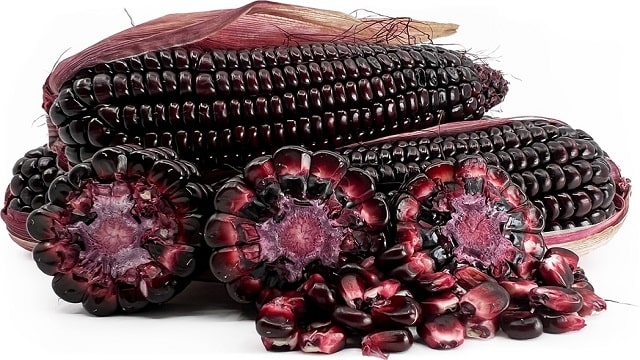
This variety, native to Peru and Mexico, stands out for its purple hue. This color in food is always indicative of a high content of anthocyanins, a powerful antioxidant with anti-cancer potential. In addition, it is also an extraordinary source of iron and a good source of calcium. These nutritional qualities differentiate it from other varieties.
White corn
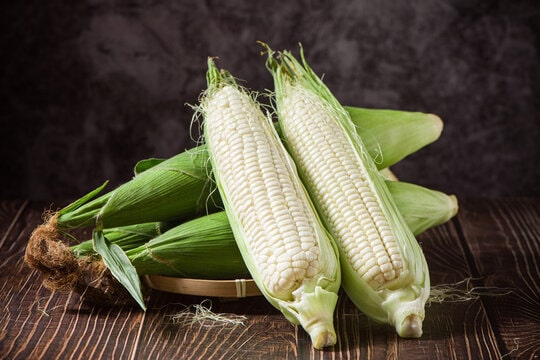
Unlike other varieties such as hard corn, white corn is almost exclusively used for human consumption. Its culinary uses vary greatly from one region to another and it can be boiled, baked, or fried. It is one of the least sweet types of corn.
Yellow corn
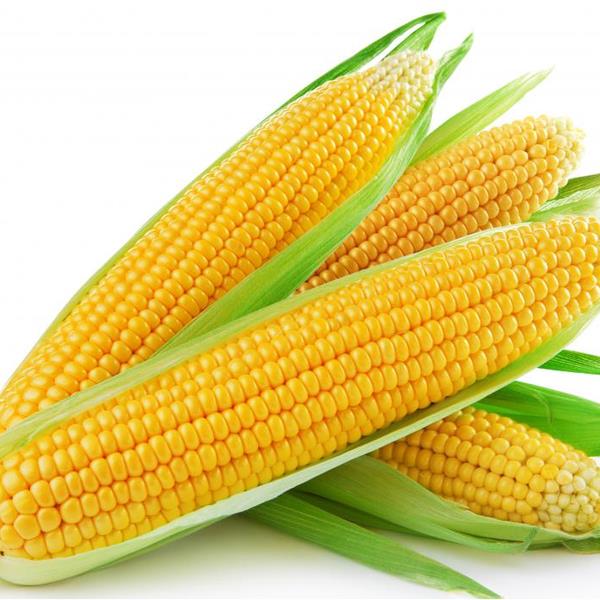
Yellow corn is used not only for human consumption but also for industrial processing and animal feed. One reason for this is that its carotenoid oil pigments help give poultry meat, animal fat, and egg yolk a yellow color that results in an appetizing visual experience for the consumer.
Sweet corn
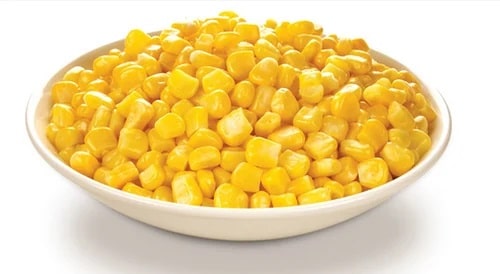
This is one of the most well-known types of corn. Its grains are soft, have a high percentage of water, and are sweet due to their high sugar content. Almost all sweet corn is a type of yellow corn. Its disadvantage is that it is part of the crops with high susceptibility to pests.
Floury corn or flour corn
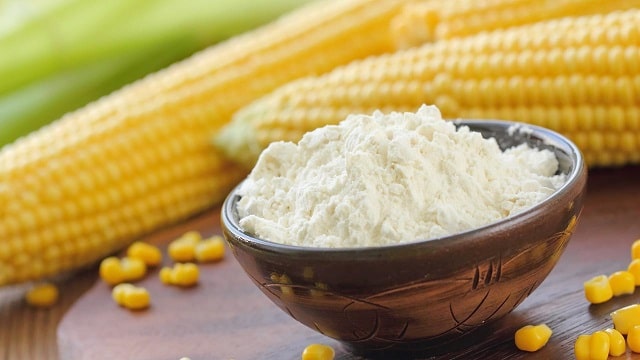
The type of grain of this corn is the softest of all and is ideal for making flour. This in turn causes its grain to rot easily at the time of harvest, collection, and storage. In this case, we find corn of various colors with the floury property.
Native corn
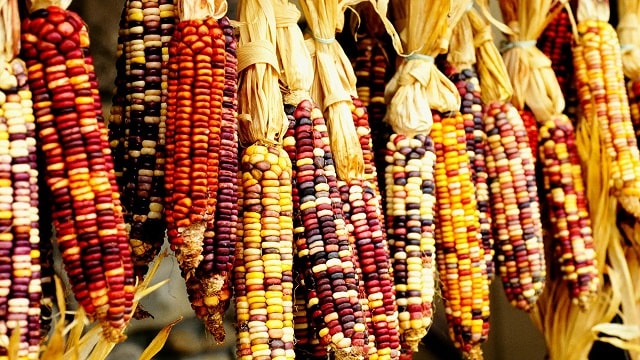
Criollo corn refers to the set of varieties that have been maintained and selected by farmers since pre-Hispanic times, as opposed to hybrid or transgenic varieties. Because of its quality, each criollo type is linked to a specific region and it is estimated that there are approximately fifty today.
Rolled corn
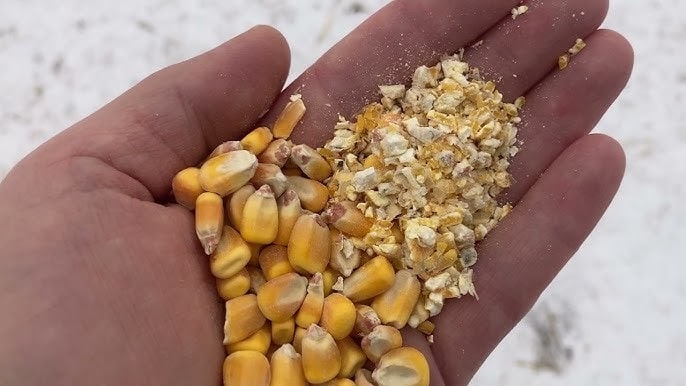
This type of corn is exclusively intended for animal feed. To increase its digestibility, the starch is gelatinised by cooking it at 100 ºC for 30 minutes. It is then rolled, that is, it is turned into a flake thanks to the action of two rollers and dried to feed livestock.
Genetically modified corn vs organic corn
Transgenic corn refers to all varieties of corn that have been modified using genetic engineering techniques to achieve some improvement, such as greater resistance to pests, increased concentration of certain nutrients, etc. Organic corn, by definition, is corn that has not been interfered with and that, to a greater or lesser extent, depending on the categorization, applies agricultural techniques that seek to promote soil fertility, avoiding invasive or harmful measures for the ecosystem.
Although some studies support the food safety of genetically modified foods, the Mexican government has made the decision to officially ban their use for human consumption.
Hard corn
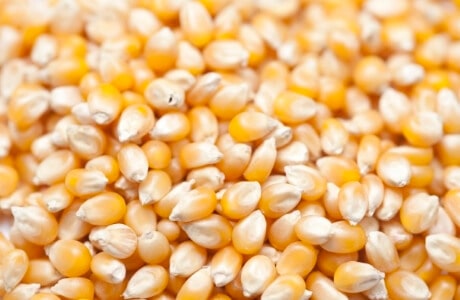
This is the type of corn with the hardest and roundest grains. It is one of the varieties richest in starch and its cultivation requires climates that are somewhat colder than average. Its success lies in its resistance to pests and it is used both as livestock feed and for the production of one of the essential products in the kitchen: cornstarch.
popping corn
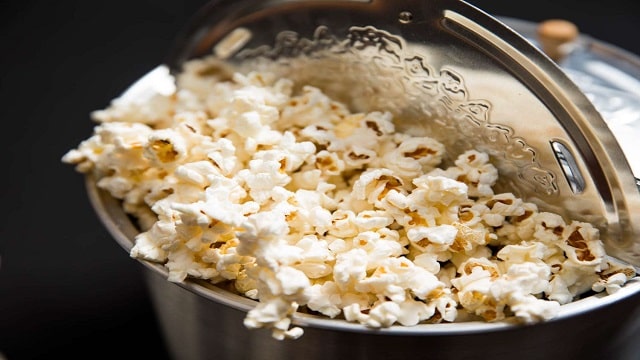
The most similar type of corn to hard corn. Its kernel is round and hard and its most well-known use is popcorn. Once in the hot pan, the endosperm transforms into the white and tasty part that we all know. In this category, we find mainly white and yellow corn types.
Dent corn
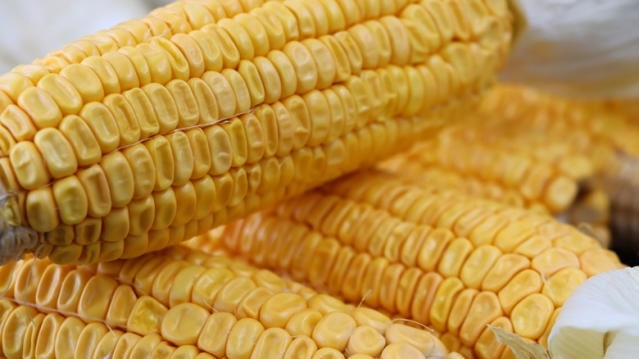
With a higher soft starch content than hard corn, it is one of the most cultivated types. Its name comes from the tooth-like shape it takes once it has gone through the drying process. It is widely used as food for humans and animals, as well as for the production of cornstarch.
Common corn on the cob
One of the most successful ways to enjoy corn is by cooking the cob directly, for example, spread with butter, over embers. The ideal variety for this is this type. It also works wonders when cooked and boiled in plenty of salted water. This variety is used especially in regions where hard or sweet corn is not common.
Baby corn
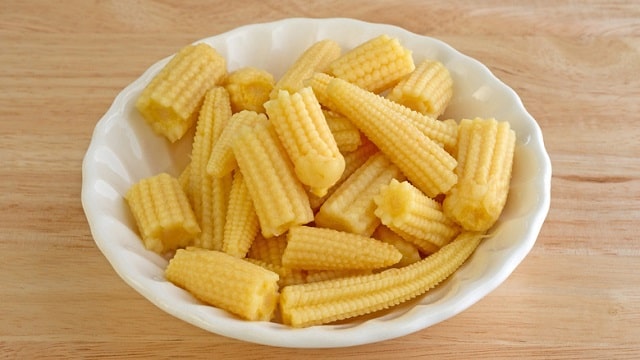
Baby corn is a type of bright yellow mini corn found in many supermarkets, sometimes frozen or canned. Its size is obtained thanks to early harvesting and, unlike other crops, it grows in tropical climates.
Nutritional value of corn
The nutritional value of corn on the cob is notable for its medium calorie content, high carbohydrate content, and a good supply of minerals and B vitamins. It is important to bear in mind that any cooking or canning process significantly reduces the amount of minerals and, above all, vitamins.
| Calories | 86 kcal |
| Carbohydrates | 19 g |
| Fats | 1.2 g |
| Proteins | 3.2 g |
| Fiber | 7 mg |
| Folic acid | 46 mcg |
| Iron | 0.52 mg |
| Magnesium | 37 mg |
| Zinc | 0.46 mg |
| Vitamin C | 6.8 mg |
| Vitamin B1 | 0.155 mg |
| Vitamin B3 | 1.8 mg |
| Vitamin B5 | 0.5 mcg |
Properties and benefits of corn
Corn has the nutritional properties of cereals, is rich in fiber, and contains antioxidants that are very beneficial for health.
Improves microbiota and intestinal activity
Corn contains between 4 and 7 g of fibre per 100 g. Fibre contributes to the proper functioning of the intestinal system, prevents constipation, and helps regulate blood sugar levels. It also provides food for the microbiota, maintaining the diversity and functionality of a healthy intestinal flora.
It has an antioxidant effect
Corn has a combination of vitamins and other compounds that have a powerful anti-aging effect. This is due to the presence of vitamins A, C, and E, along with the content of carotenoids such as lutein, zeaxanthin, and beta-cryptoxanthin, responsible for its yellow color. In the case of purple corn, it is rich in anthocyanins, considered to be the most antioxidant pigment with an anti-cancer effect.
Acts as a neuroprotector
Corn contains a significant percentage of B vitamins. Among them, vitamin B1 or thiamine and vitamin B9 or folic acid stand out. Among their various functions, both have been shown to improve cognitive performance, including improvements in memory and speed of information processing in people between 50 and 70 years of age.
Take care of your cardiovascular health
Corn is rich in potassium and folic acid, which helps regulate blood pressure, prevent anemia and reduce the risk of developing fetal diseases. Thanks to its fiber content, it also influences cholesterol regulation, which is why corn consumption is related to good cardiovascular health.
Good for eye health
Lutein and zeaxanthin, in addition to being antioxidants, also play an important role in vision. Their consumption prevents age-related macular degeneration by preventing blue light from penetrating deep structures, accompanied by a reduction in the oxidative process.
Strong bones, muscles, and immune system
Phosphorus, magnesium, and zinc are the triad of minerals. Phosphorus keeps bones and teeth strong while collaborating in protein synthesis, which is essential for the synthesis of muscle tissue. Magnesium, on the other hand, helps maintain the proper functioning of not only the muscles but also the nervous system and, like zinc, strengthens the immune system.
Contraindications of corn
Corn is a safe food with only a few contraindications in the context of specific diets with a risk of nutrient deficiencies and certain pathologies that also require ensuring good absorption. In all other cases, corn is an easy ingredient to include in your daily diet.
Nutrient absorption
Corn contains phytic acid, a component present in cereals and legumes that reduces the absorption of minerals such as iron, zinc, or calcium. Within the framework of a complete, balanced diet with multiple sources of nutrients, this disadvantage should not be a problem. The cases in which it should be observed more closely are in the case of nutritional deficiencies, such as anemia and iron deficiency, or in the context of vegetarian and vegan diets, which always deserve special attention when it comes to ensuring the correct supply and absorption of minerals.
Not recommended in case of irritable bowel syndrome or SIBO
The term FODMAP designates a type of short-chain carbohydrate. They are present in foods such as beets, onions, or corn. People who suffer from irritable bowel syndrome or SIBO (small intestinal bacterial overgrowth) or intestinal disorders of this nature, should avoid consuming corn, or reduce their consumption as much as possible because it is rich in FODMAPs.
Allergies
Corn is a type of cereal that can cause allergies. A person allergic to corn should not only avoid consuming it but also many foods that contain some of its derivatives such as corn syrup, dextrin, malt syrup, or starch, among others.
Recipes and uses in the kitchen
From corn to walking. And it is used for all kinds of dishes. From a snack like toasted corn, in a frying pan to become popcorn and even as a main dish. Its grilled corn on the cob is a classic of world gastronomy, boiled it is an essential part of mondongo, Venezuelan sancocho, and a good Canarian watercress stew.
Corn flour is used to make tortillas, arepas, and totopos, the latter better known by their commercial name and ideal to accompany guacamole. Canned sweet corn tops mixed salads and accompanies all kinds of ceviches: Peruvian ceviche, cockle ceviche, shrimp ceviche, sea bream ceviche, etc.
In Italy, it is transformed into polenta and if we return to Mexico we can find it in the form of creamed corn or as corn bread, a kind of soft cake. Chopped corn with egg and cheese is roasted to become Ecuadorian humitas. And the freshest options include the poke bowl. What can I say: an ingredient destined to feed the entire world?
